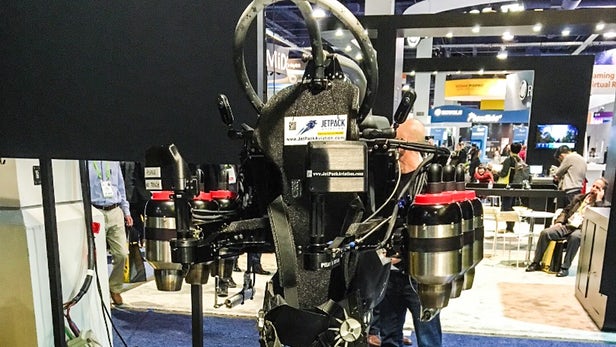
Breaking News
 SILVER CRASHES TO $75 - But China Is Paying $89 (Ghost Week Trap)
SILVER CRASHES TO $75 - But China Is Paying $89 (Ghost Week Trap)
 Firegate: Democrat LA Mayor Karen Bass' Admin Altered Palisades Fire Report & Deleted Evidence
Firegate: Democrat LA Mayor Karen Bass' Admin Altered Palisades Fire Report & Deleted Evidence
 BREAKING: Candace Owens' Massive Mind Control House of Cards is Now Collapsing in Real Time
BREAKING: Candace Owens' Massive Mind Control House of Cards is Now Collapsing in Real Time
 We Cannot Build an Economy on Lies
We Cannot Build an Economy on Lies
Top Tech News
 EngineAI T800: Born to Disrupt! #EngineAI #robotics #newtechnology #newproduct
EngineAI T800: Born to Disrupt! #EngineAI #robotics #newtechnology #newproduct
 This Silicon Anode Breakthrough Could Mark A Turning Point For EV Batteries [Update]
This Silicon Anode Breakthrough Could Mark A Turning Point For EV Batteries [Update]
 Travel gadget promises to dry and iron your clothes – totally hands-free
Travel gadget promises to dry and iron your clothes – totally hands-free
 Perfect Aircrete, Kitchen Ingredients.
Perfect Aircrete, Kitchen Ingredients.
 Futuristic pixel-raising display lets you feel what's onscreen
Futuristic pixel-raising display lets you feel what's onscreen
 Cutting-Edge Facility Generates Pure Water and Hydrogen Fuel from Seawater for Mere Pennies
Cutting-Edge Facility Generates Pure Water and Hydrogen Fuel from Seawater for Mere Pennies
 This tiny dev board is packed with features for ambitious makers
This tiny dev board is packed with features for ambitious makers
 Scientists Discover Gel to Regrow Tooth Enamel
Scientists Discover Gel to Regrow Tooth Enamel
 Vitamin C and Dandelion Root Killing Cancer Cells -- as Former CDC Director Calls for COVID-19...
Vitamin C and Dandelion Root Killing Cancer Cells -- as Former CDC Director Calls for COVID-19...
 Galactic Brain: US firm plans space-based data centers, power grid to challenge China
Galactic Brain: US firm plans space-based data centers, power grid to challenge China
Interview: David Mayman debuts the faster, safer, six-engine JB11 jetpack

At CES 2018, the team was proud to unveil the next generation. The JB-11 takes safety to the next level, as well as speed and power. Using three smaller turbojet engines per side instead of just one, JB-11 can hit speeds over 150 mph (240 km/h). But more importantly, it's now got auto-stabilization tech built in, and in the event of engine failure, it can automatically re-balance the thrust to keep a pilot from spiraling into a messy doom.
Mayman is always fascinating to talk to – unlike many other personal aviation pioneers these days, he's always got time for a chat and is happy to discuss the process of developing and working on these alien-grade machines. We've always found him a great antidote to the Silicon Valley cocktail of hype and secrecy, he's an honest, grounded and forthright character. And a frickin' jetpack pilot.
We spoke to him yesterday about the JB-11, the process of FAA certification of jetpacks and VTOL flying cars, the process of getting jetpacks out into the market, and the options the team is looking at to get its flying car up and running in the absence of next-gen battery technology that's holding the whole sector up. What follows is an edited transcript.



